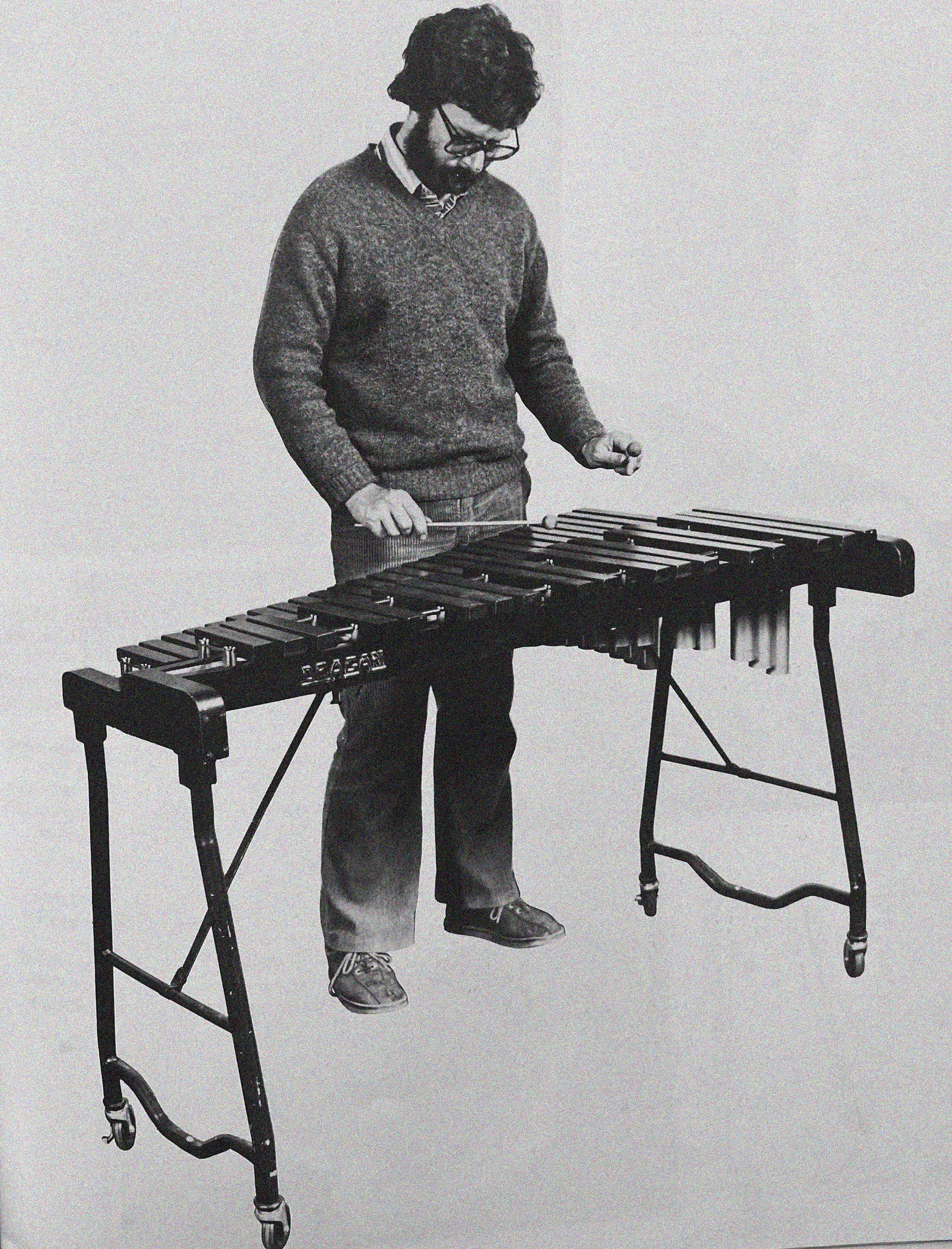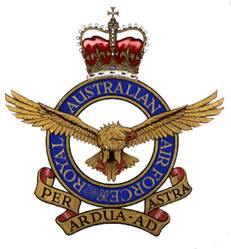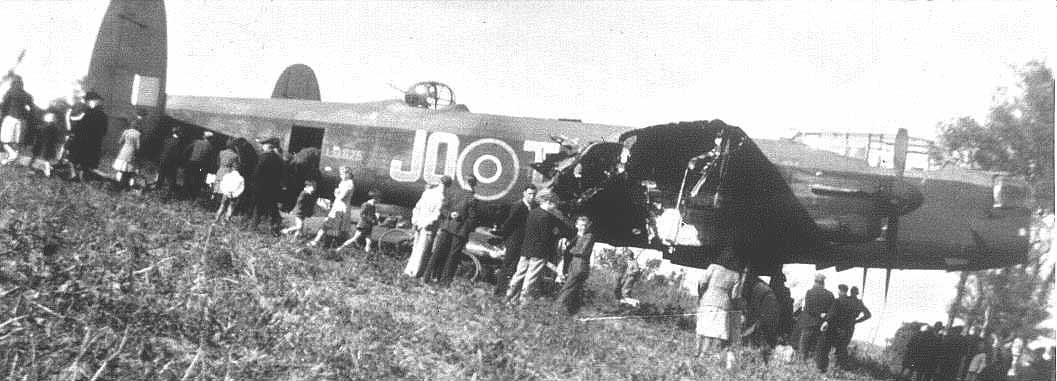Don Wills Story, Loss of Lancaster LM675
Don Wills Story, Loss of Lancaster LM675
Photo (click to enlarge): The plane has half on the left wing missing, right side wing in shreds, a right side engine on fire, control surfaces severly damaged, fuel tanks blown away, falling out of the sky and the pilot claims "Moderate Control"463 R.A.A.F. SQUADRON
BOLOGNE, FRANCE. 17 SEPTEMBER,1944, TAKE OFF TIME: 08.15
|
PILOT |
F/O. K.E.J. TANNER | R.A.F. |
| FLIGHT ENGINEER | Sgt K.W.YATES | R.A.A.F |
| NAVIGATOR | F/Sgt R.W. DENT | R.A.A.F |
| BOMB AIMER | F/Sgt W.A. HUNDY | R.A.A.F |
| WIRELESS OPERATOR | F/Sgt N.PALMER | R.A.A.F |
| MID UPPER GUNNER | F/Sgt B.D. McGILL | R.A.A.F |
| REAR GUNNER | F/Sgt D.McK. WILLS | R.A.A.F |
Pilots report
Sortie completed; slight haze; visibility fair; Red T/I (Target Indicator) in sight as instructed; 8,000ft; 09.15.30 hrs; 11 X 1,000 S.A.P.; USA, 4 X 1,000 GP (bomb load). Appeared to be a good concentration of bombing. Took off from Waddington, received hit from flak, and crew baled out. Pilot landed aircraft at Rolet south of Samer. On our bombing run, immediately after "Bombs Gone" we were hit by heavy flak, causing a hole in our port wing approximately 11ft; X 6ft; and the ailerons severely damaged. Aircraft went out of control in a diving turn; during this time No.3 tank blew out, and exploded behind aircraft. I ordered crew to abandon aircraft and moderate control of aircraft was maintained at 4,000 ft; during which time Wireless Operator, Mid Upper and Rear Gunners endeavoured to get out of rear door. This was jammed and the handle broke off, so had to come to the front hatch which partly jammed adding further difficulties for crew trying to bale out. Eventually all members of crew apart from Pilot squeezed themselves out. During this time reasonable controlled descent was maintained with port engines fully opened; starboard engines half throttled; full aileron and rudder bias. It is estimated crew got out at 2,000 to 3,000 ft; and at 1,500 ft; I made an effort to bale out, unsuccessfully as the aircraft dived and was uncontrollable. I regained control of the aircraft at 800 ft; and having no alternative, had to make a forced landing in the quickest possible time. Landing eventually effected in a field that was obstructed with anti-invasion posts, with my starboard engine on fire; undercarriage and flaps serviceable and operated allowing me to make a successful landing. At the end of the landing run, to avoid further damage, swung aircraft to port, coming to rest in a wood. Made a quick get away as starboard outer wing and engine were on fire. Throughout these extremely difficult circumstances my crew behaved in an exemplary manner and showed calm and coolness throughout. Navigator (F/Sgt. Dent) states: "Our pilot's captaincy and leadership displayed throughout those intense moments gave us confidence and inspiration. We considered aircraft impossible to fly, and how he effected a landing was, in the opinion of all of us, a miracle, and we never expected after we left that the aircraft would be landed". Editorial Comment. I like the comment "Moderate Control". The plane has half of the left wing missing, right side wing in shreds, a right side engine on fire, control surfaces severely damaged, fuel tanks blown away, falling out of the sky and the pilot claims "Moderate Control".
BOLOGNE 17 September, 1944
My crew had had a busy week of Operational Flying:
- Sunday 10th:late afternoon take off target Le Havre
- Monday 11th: day break take off once more Le Havre
- Monday 11th: night take off target Darmstadt.
- Tuesday 12th: night take off Stuttgart
- Friday 15th: briefing for Brunswick, take off delayed 3 times cancelled midnight
- Saturday 16th: no operations squadrons on stand down. Party night.
- Sunday 17th: awoken before daylight to attend briefing.
Boulogne to be target; German troops although surrounded were holding fast. Aim of operation was to bomb so that our forces could move in immediately and liberate the area. Briefing said there would not be any anti aircraft guns and that we would bomb at eight thousand feet and that it would just be a matter of dropping our bombs and straight home. We were on our bombing run I heard 2 explosions near the aircraft then there was a third and I saw a blazing fuel tank pass my rear turret. The pilot ordered an immediate bale out. My rear turret was out of action so that I had to enter the main fuselage instead of rotating my turret to the beam and dropping out. Inside I saw the Mid Upper Gunner and Wireless Operator trying to open the rear door. So we all hastened to the front escape hatch. As I passed the astro-dome I saw a massive hole in our port wing. As we reached the front hatch we found the navigator was trapped by his parachute so he had to be helped out. It was found that the front hatch had partially jammed. Both the Mid upper Gunner and Wireless Operator had to be helped to get through the opening. Fortunately for me I was wearing the pilot type parachute which enabled me to lower my legs through the opening and with one hand push my parachute pack through and then drop out of the aircraft. All this time the pilot was able to maintain some control of the aircraft but great loss of height. I reached for the ripcord but had trouble in finding it however I must have pulled it because my chute opened and it was only a matter of less than a minute and I was on the ground. On the way down I was hoping to see the pilot get out instead I saw the aircraft still burning and go below some hills. In the process of baling out my very loose fitting boots had been pulled off by the slipstream it was my fortune to land in a freshly ploughed field. Within a minute or so I was picked up by some soldiers and taken to their camp and had the best cup of tea ever out of a jam tin! I was moved to another military camp and early in the afternoon was reunited with the navigator, bomb aimer, and flight engineer. Later we were taken to an RAF camp and there we met the pilot. (The Mid Upper Gunner still missing.) He had successfully landed the aircraft. We were then informed that the Wireless Operator was already back at Waddington! The Base Commander Air Commodore Hesketh had flown that day in his own aircraft to observe the bombing from a safe distance. When he saw that there had been some parachutes he landed somewhere nearby to see if he could pick up anybody and take them back to Waddington. In actual fact a record had been set. Shot down over France baled out and back on the Squadron not too long after the main force had returned. That evening in company with the Intelligence Officer we all went to the local pub (Estaminet) as soon as the locals saw us they slammed the door in our face. So we returned to the Sergeants’ Mess and filled ourselves with whisky, beer was not available. The following day the 18th; At breakfast the Mid Upper Gunner arrived. The pilot was returned to England. We were taken to see the aircraft. The pilot had landed it wheels down on top of a hill. It seems that as soon as the aircraft came to a halt the starboard engines which had been burning fell off and rolled down the hill. The remainder of us returned to England the following day Tuesday 19th. Sept. We landed at Northolt. When we went to the Sergeants’ Mess for lunch the Warrant Officer refused us lunch unless we paid for it. A threat by us that the matter would be reported to our Squadron Commander and he relented. We were back at Waddington late that afternoon. The amazing thing was that none of us suffered a scratch. An analysis for Squadron casualties was that we were the first crew to be shot down over Europe and return safely unharmed. There was a sequel to this in 1991. A Frenchman sent a photograph of our aircraft JOT to the English magazine “Fly Past” asking if there were any survivors. It appears that this photograph had adorned the wall of his Aunt’s restaurant for many years and had been stored away in an old shoe box.
Extract from AWM 64 OPERATIONAL RECORD BOOK (with thanks to Leah Kernot, daughter of the Bomb Aimer W A Hundy)


